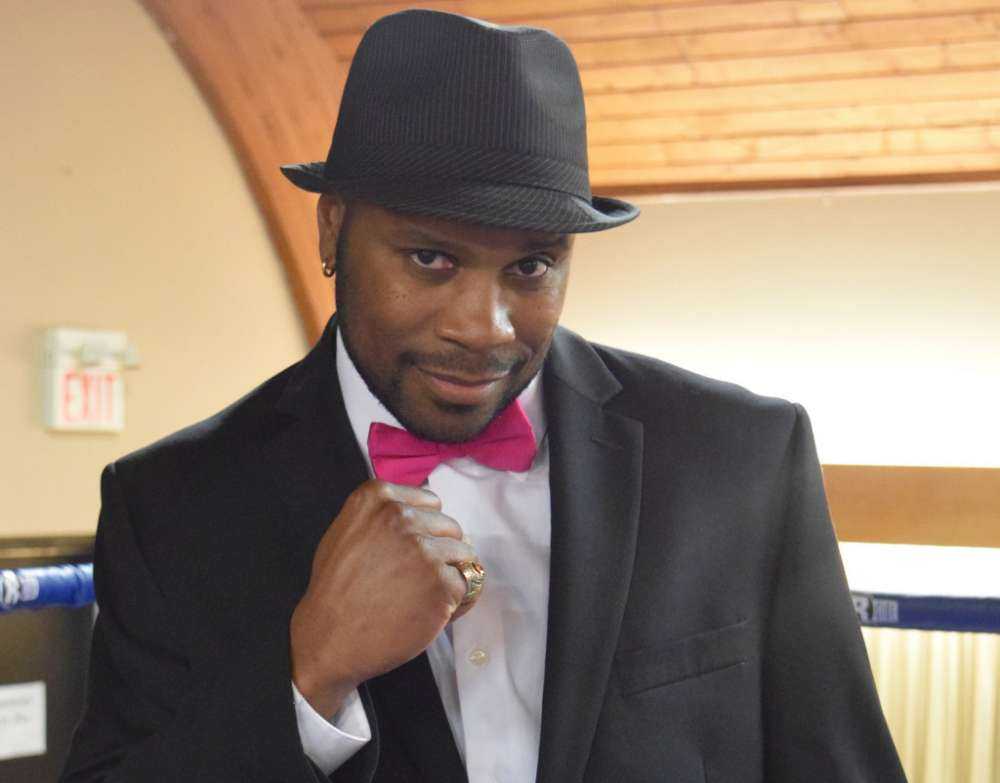on
BY JELANI GRANT
After a seven year hiatus, a seasoned former world champion began training for the 2013 National Boxing Authority Middleweight championship. “I’d always said to myself that I could be the best in this country in my 40’s”, Fitzroy Vanderpool said. “Watching some of the fighters on TV, I said…the first thing to go in a fighter is his speed, but my speed hadn’t gone anywhere, I said, “Man I’m still fast, I got this, let me give it a go””.
Roberto McLellan was the young and talented fighter that stood in Vanderpool’s way of the title. Before he could be considered eligible to fight, he was taken through a number of physical and medical tests to ensure he was able. “My last three fights, when I retired, were TKOs.” When Vanderpool decided he was ready to return to boxing, he said the commissioner required him to get a cat scan, an electroencephalography (EEG), an electrocardiogram (EKG), a neuropsychometric assessment and then spar with four boxers in twelve rounds before he could be cleared to fight. “I never even did that when I was a world champ, getting ready to fight…but I said, no problem, I’ll do it.” After jumping through hoops, he was ready to go the full ten rounds with McLellan who was seventeen years younger. However, Vanderpool’s victory placed him in the history books as the oldest fighter to win a professional boxing title.
Those definitive moments would be an incredible highlight to end Vanderpool’s boxing career and a continuation of ‘The Whip’ legend. Vanderpool was inducted into the Ontario Boxing Hall of Fame at the Hansa Haus Hall. His high spirited personality throughout the ceremony as well as his legendary list of accomplishments inside and outside of the ring proved it was his time to be recognized as a boxing legend. “It’s a pleasure. I’m really humbled to be accepted as one of the nominees and to be inducted into the Hall of Fame…I was determined to be there,” Vanderpool told Toronto Caribbean. “It’s not what I’ve done in the ring, its what I do outside the ring. Visiting kids in hospitals, running camps, running the gym…so give me a little respect”.
‘The Whip’ had already become an icon before returning to the ring to win the National Boxing Authority Middleweight title in 2013. “If my speed had gone, I would’ve said no because that’s the first thing to go in a fighter and you gotta be quick with the young guys cause this is a young guys sport.”
Before his return though, Vanderpool’s boxing legacy included the 1996 Canadian Professional Boxing Federation championship, the 1997 World Boxing Federation Intercontinental championship, the 1998 World Boxing Council Welterweight Fecarbox championship, the 1999 World Boxing Federation Superwelterweight World championship and the 2002 World Boxing Council Superwelterweight Fecarbox championship.
SportFitz, founded by Vanderpool, is aiming to become the new era of concussion reduction technology by reducing the potential long-term affects of concussions for athletes all around the world. The technology is designed to detect concussion symptoms in real time so an athlete who suffers a head injury during a game can quickly determine if they are fit to continue. “We have sensors in the equipment where it will detect that hit coming down and it can be detected on a tap or wherever it is so you can know if someone got hit with a certain velocity, how hard they’re hit and maybe keep them from going in the ring again.”
Though boxing is considered one of the most popular and physically demanding sports, before this new equipment, fighters could only rely on coach and referee decisions as well as their own intuition. This raised health concerns as concussion symptoms can take several hours to present themselves. The Saskatchewan Brain Injury Association classifies concussions as a brain injury that can cause confusion or temporary incapacity after taking a hit to the skull. Though concussions are not life threatening, they can potentially lead to long term effects to the brain. SportFitz technology would reduce the number of undiagnosed concussions, making strenuous sports like boxing safer for their athletes.
In addition to being the author of the book, ‘The Whip’ and producing the documentary, ‘With Hope It’s Possible’, the Three Division Professional Boxing Champion is contributing to the development of aspiring fighters with The Whip Boxing Academy, founded by Vanderpool, as well as summer camps for youth 8-14 years old. “It’s boxing and fitness. Last year I had ‘Summer Camp with the Champ’. We sent six kids to a five day camp with me.” “I’m not a big Tim Hortons, I’m a little me but I’m doing big things for these kids.”
Located in Waterloo, Ontario, Vanderpool’s boxing academy is the only gym in the Tri Cities with a World Champion as coach and head facilitator of its boxing program. “I had given [opening another boxing academy] some thought…It’s a possible thing in the distant future.” Until then, Vanderpool continues to train with young fighters while working on a system that will contribute to the healthcare of boxers in the future.
Stay in the loop with exclusive news, stories, and insights—delivered straight to your inbox. No fluff, just real content that matters. Sign up today!












